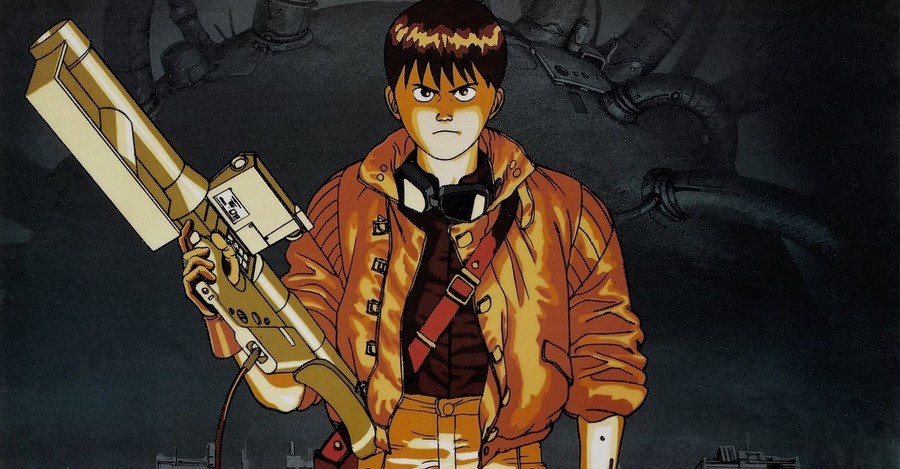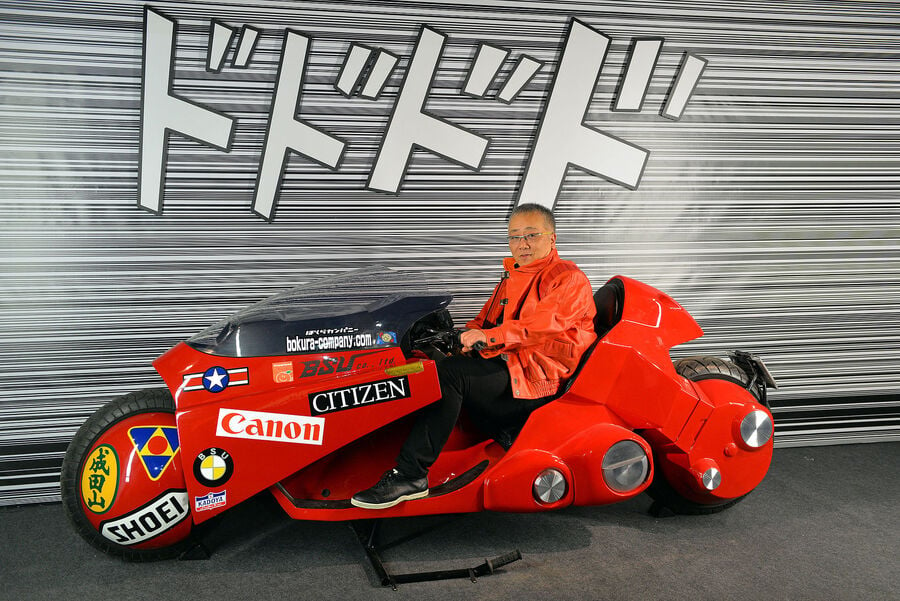
Few anime films are held in as high regard as Akira. Katsuhiro Otomo's 1988 adaptation of his 1982 manga of the same name typically tops most recommendation lists when it comes to introducing someone new to the world of Japanese animation, thanks to its expertly crafted detailed world, story, and characters. So it comes as no surprise then that video game developers have for the longest time tried to successfully bring the film into the world of video games and capitalize on its impact.
In 1988, the same year as the film's release, the Kyoto-based developer Tose partnered with the publisher Taito to release a Japan-exclusive adventure game based on the magazine for the Nintendo Famicom, which received somewhat of a lukewarm response from magazines at the time like Famicom Tsūshin. Then, throughout the early-to-mid 90s, various Akira projects were said to be in development across various machines (including for the Sega Mega Drive / Genesis, Sega CD, SNES, and Game Boy), with only ICE Software's poorly-reviewed releases for the Amiga and Amiga CD-32 game managing to make it to market in 1994.
Over the last couple of decades, preservationists/journalists (including the author and frequent Time Extension contributor John Szczepaniak) have dug up a ton of information about these mysterious unreleased projects, and footage of the Game Boy and Mega Drive / Genesis versions has since surfaced online. But, there is still a great deal of interest in learning more. So recently, when we had the chance to speak with Lawrence Siegel — the American businessman responsible for acquiring the Akira video game license in the 90s — we couldn't help but slip in a few questions about the project to hear his side of the story.
In the past, we've encountered various stories of how Siegel first heard about the film, with Siegel himself claiming he originally came across it on a visit to Osaka, Japan in 1989. The commonly accepted version of events, however, which is detailed on the website Hidden Palace, takes place four years later than that, with the Electronic Gaming Monthly founding editor, Steve Harris, gifting him a VHS of the anime to watch in 1993. Regardless of the truth, Siegel loved what he saw of the film and spotted the potential to turn it into a hit video game with his company Black Pearl Software — a developer/publisher based in Chicago.
"I watched it," he recalls. "I was fascinated by it, and I was so fascinated by it that [...] I just said, ‘This is going to be something.’
From there, Siegel then went to Japan to try and track down Kodansha, the production company behind Akira, and its creator Katsuhiro Otomo, hoping to license the film, but was told those rights had already been licensed to an American studio called Streamline Pictures (the company behind the North American dubbed release). So Otomo suggested that he reach out to the Streamline employee Mike Haller, who had written the script for the English dub and was the production coordinator of that project, and gifted Siegel a bunch of hand-picked animation cells for his interest in the film.

Flying back to the States, Siegel immediately got in touch with Haller and very quickly he was able to walk away with what he refers to now as "a 5-year deal".
Siegel recalls "I called Haller and he said, ‘Yeah, I can give you all the rights to Akira’ – other than the movie rights, which were with Streamline. I said, ‘Okay’. I didn’t have the money to develop all the games across Nintendo, Sega, PC, and handheld — I just didn’t have the dough. So I said, ‘Okay, well, the cheapest way to enter this thing is through the Game Boy.’ And I knew a relatively capable studio and he said he had a dozen or half a dozen guys. And I thought if I got that and released it on Game Boy, then I could get the money and put it on the other systems."
I didn’t have the money to develop all the games across Nintendo, Sega, PC, and handheld — I just didn’t have the dough. So I said, ‘Okay, well, the cheapest way to enter this thing is through the Game Boy.’ And I knew a relatively capable studio and he said he had a dozen or half a dozen guys.
The studio Siegel picked was Handmade Software, a small company, led by an individual named Jim Gregory, that had previously produced a bunch of Atari Lynx titles like Awesome Golf, Power Factor, and Dracula the Undead. He trusted that Gregory and co were capable of delivering the title, but was ultimately unimpressed with the work that the studio was producing. According to Siegel, Handmade Software seemed far more concerned in trying to convince him to sign a contract for an SNES version of the game, so he eventually took the title off them and gave it to another studio called ICE Software, based in Slough, which also sublicensed the rights for the Amiga.
It was around this time that the Home Alone publisher THQ acquired Black Pearl Software, with Siegel taking on the role of chief operating officer at the company. This meant that he potentially had more resources to put towards the project, but it also meant he now had to convince other people to let him go forward with the idea, including the CEO Jack Friedman and the CFO Brian Farrell.
"When I was purchased by THQ, I told them the gem in my stable was the rights I had to Akira," says Siegel. "I said, ‘Look guys, I don’t know what you’re thinking about, but I know you want to buy me because of my development crew but the reality of the situation is there's this film called Akira and I’ve got the rights to it.'
It was my intention now I can finally make those three games I’ve always wanted to make. The Nintendo, the Sega, and the big-time PC version of Akira. I could bring it to the States and people can see how great this anime is.
"So it was my intention then that I could finally make those three games I’ve always wanted to make: the Nintendo, the Sega, and the big-time PC version of Akira. I could bring it to the States and people can see how great this anime is. I had VHS tapes and I gave Jack Friedman and Brian Farrell each a VHS tape of Akira. And they watched it and they said, ‘What? Who?’ I said ‘It's not niche. Everybody in the video game industry will know what Akira is when we bring Akira out. This is a big-time title. This could be an anchor title. This could be your franchise for years.’ I said, ‘You have no idea how significant this is.’"
In late 1993, reports started to spread about Siegel's quest to adapt the film, with a December issue of Game Zone mentioning that both a Super Nintendo and Game Boy version were in development at Handmade Software and ICE Software respectively. Then, the following year, at the Summer Consumer Electronics Show in June 1994, a prototype of a Sega Mega Drive / Genesis game was shown at the event, which included a Road Rash-style motorbike level, a first-person stage, and platforming segments. A handbill was distributed at the event indicating it was in development for the SNES, Game Boy, Sega Mega Drive / Genesis, Sega CD, and Game Gear, but later sources also suggested that Atari Jaguar and PC versions of the game were also being considered. Ultimately, though, none of these would ever see the light of day, with ICE's independently published Amiga and Amiga CD32 titles being the only ones to make it out the door.
Despite having high hopes for the project, Siegel claims he just couldn't get the leadership to care enough about Akira, with Friedman and the other senior executives at the company constantly prioritizing other licenses instead.
He tells us, "Jack kept licensing games. Everything from Wayne’s World to you name it, he was licensing games. You know, Ren and Stimpy. Anytime he saw a license, he would run down to the studios and pay a bazillion dollars to get the license and say, ‘Okay Larry, make a game.’ Well, unfortunately, that doesn’t work all the time. Jack would get tons of new television shows that never panned out and I would be using development resources on these games. The television series would be cancelled after six episodes and now I have a video game based on a television show that’s cancelled. But that was Jack. Anything that he could do that would get a license, he would do. So I was very disillusioned there."
Siegel ended up leaving THQ in 1995, but before he did, he brought Mike Haller, the Streamline employee he had dealt with in 1993 onboard as a consultant (a position that later resulted in him becoming senior vice president of the company). Much like Siegel, Haller never had any luck making a game based on Akira, having to fight the same battles to get any attention.
"Mike was never able to build it, and he ended up building a bunch of wrestling games for them. He had no more luck with them than I did,’" says Siegel. "The biggest problem with the video game industry is it left the hands of game guys and went into guys like corporate suits like Brian Farrell and Jack Friedman who had no concept of games. They had no idea what was fun or what would be exciting to play. So in consequence, it went to hell. Akira was never built and that was tragic, and I feel bad about that because… I go to Japan, I’ve loved anime for years, and I think they would make fabulous games."





